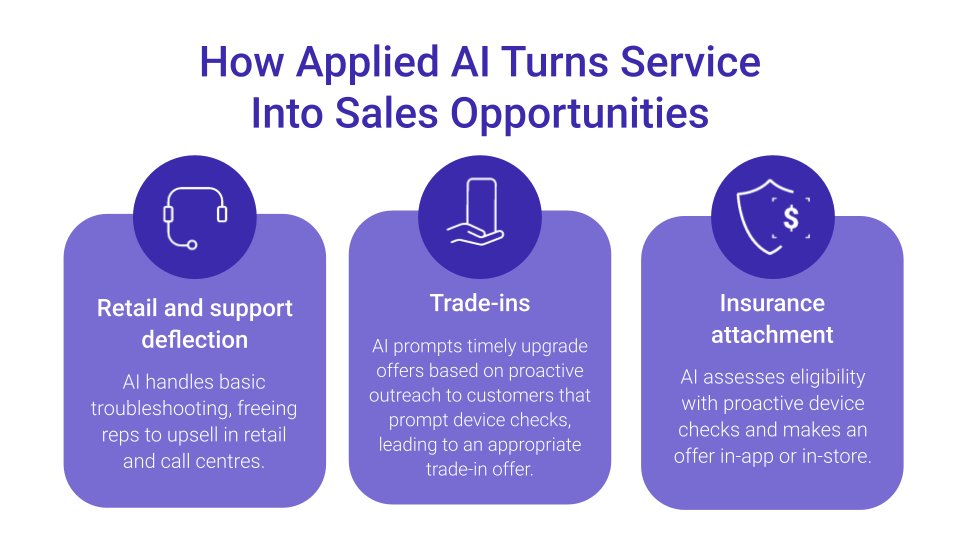For mobile operators, ARPU growth is no longer keeping pace with rising operating expenses (OpEX). OpEx has risen by over 4 percent annually for three years running, while ARPU growth is expected to land somewhere between 0-1 percent in 2025.
At the same time, the employee-to-customer ratio has declined by 20 percent over a seven-year period, making operational efficiency more critical than ever. Yet in many cases, frontline staff still spend a large share of their time on routine support tasks that could be handled more efficiently – or avoided entirely – leaving less time for interactions that actually drive revenue.
This is where the “sell, not service” argument comes in. The goal isn’t to reduce service, but to refocus operations to make customer support interactions more efficient and shift the balance towards actions that drive customer lifetime value (CLV). When service is streamlined, the time and resources saved can be redirected towards identifying upsell and monetization opportunities.
To make this shift, many mobile operators are prioritizing transformation through AI, with nearly 90 percent already implementing some form of AI, and 36 percent seeing it as a competitive advantage. However, adoption alone doesn’t guarantee results. The real value of AI is unlocked when it’s applied where it’s most needed – specifically, in frontline operations where decision-making must happen quickly and accurately. Frontline teams are routinely expected to assess plan history, upgrade eligibility, account status, device condition and current promotions. Expecting a human to process and act on all of this during a single customer interaction simply isn’t tenable.
Applied AI addresses this challenge directly by automating the collation, interpretation and analysis of this data. When implemented in a digitally mature environment, it can act as a real-time decision-making layer that can either assist frontline teams or engage directly with customers depending on the context and location (retail, call center or on-device) of each interaction. It can offload low-value interactions, such as resolving simple enquiries via virtual agents, allowing reps in call centers or retail to focus on higher-value activities.
It also makes interactions more proactive. By analyzing real-time device intelligence and CRM data together, AI can detect signals that indicate a customer is ready for a trade-in, an insurance offer or a plan upgrade, and act accordingly. Offers can be delivered in the channel that makes the most sense, and personalized based on actual customer needs and behavior. This not only improves efficiency but allows operators to use every interaction more strategically, turning service touchpoints into moments that generate value.

The business impact of Applied AI is already clear, according to internal MCE data. In support environments, operators have reduced cost to serve by up to 20 percent by streamlining operations, automating routine tasks and minimizing the need for manual intervention – directly lowering OpEx.
Real-world example: TELUS
TELUS aimed to drive more traffic into retail stores – not for troubleshooting, but for transactions. By using AI to engage customers proactively, troubleshoot potential device issues remotely, and trigger a promotional offer before the store visit, TELUS was able to refocus the in-store experience on closing sales rather than servicing devices. As a result, user journey engagement increased by 4x, user actioning of promotional offers tripled, and store locator usage rose by 1.5x, indicating stronger intent to visit retail.
According to internal MCE data, operators deploying AI to drive care-to-commerce journeys have seen ARPU increases of up to $22, showing that smarter, proactive service models can directly boost both operational efficiency and revenue growth.
MCE partners with operators to implement Applied AI across the customer lifecycle – enabling smarter, faster, and more commercially effective interactions. By embedding AI where it can have the greatest impact, we help shift service from a cost center to a growth driver.




